Women in AI
Editor’s note: This article is from WeChat public account “Academic Headline” (ID: SciTouTiao) , author: academic Jun.
When it comes to computers, the first thing people think of is a science and technology man buried in front of a computer and typing code. But in fact, the first person who designed the compiler and found BUG was an outstanding woman. She was Grace Murray Hopper, known as the first lady of computer software engineering.
On March 8, 2020, on this annual women’s day, Tsinghua University-Chinese Academy of Engineering Knowledge Intelligence Joint Research Center, Tsinghua University Artificial Intelligence Research Institute and Beijing Zhiyuan Artificial Intelligence Research Institute grandly released artificial intelligence global Women in AI is designed to select the most influential and dynamic female scholars in the field of artificial intelligence in the world through Aminer academic data.
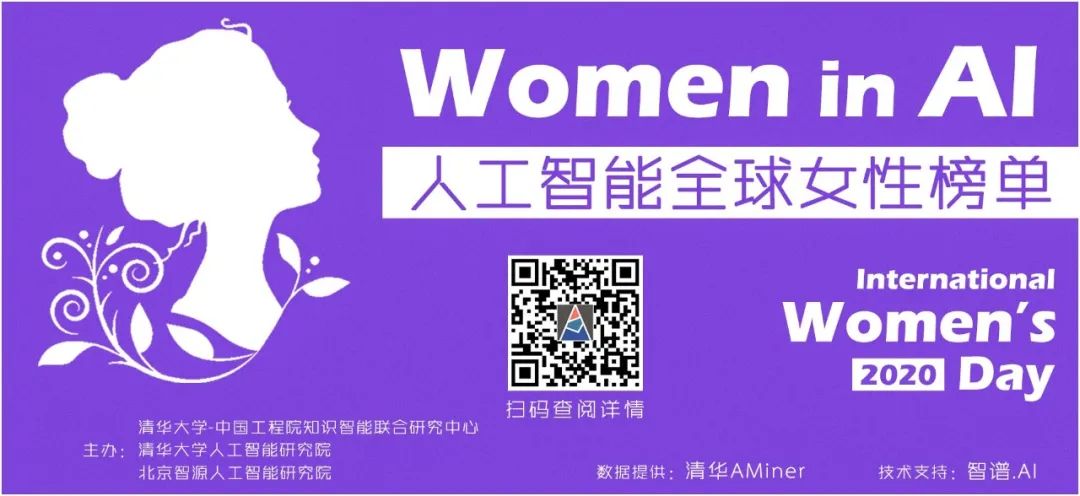
Big data analysis, discussed by the Technical Expert Committee, and referring to papers published by top journals in related fields, published in January 2020. The 2000 list of the most influential AI scholars in the world of artificial intelligence , that is, AI 2000 (www.aminer.cn/ai2000).
Among all AI 2000 scholars, 179 are female scholars. Although only 9%, this number is far beyond what most people imagine. We must know that in the era when artificial intelligence is gradually moving from the laboratory to practical applications, only female artificial intelligence scientists who can be talked about in the industry can overcome computer vision recognition.
Country distribution
In terms of country distribution, 179 women scholars are located in 21 countries around the world.More than 60% of the scholars are from the United States, with a total of 116. On the one hand, the strength of scientific research in the United States is indeed strong. On the other hand, American advanced scientific ideas are also inspiring female scientists to overcome obstacles brought by gender.
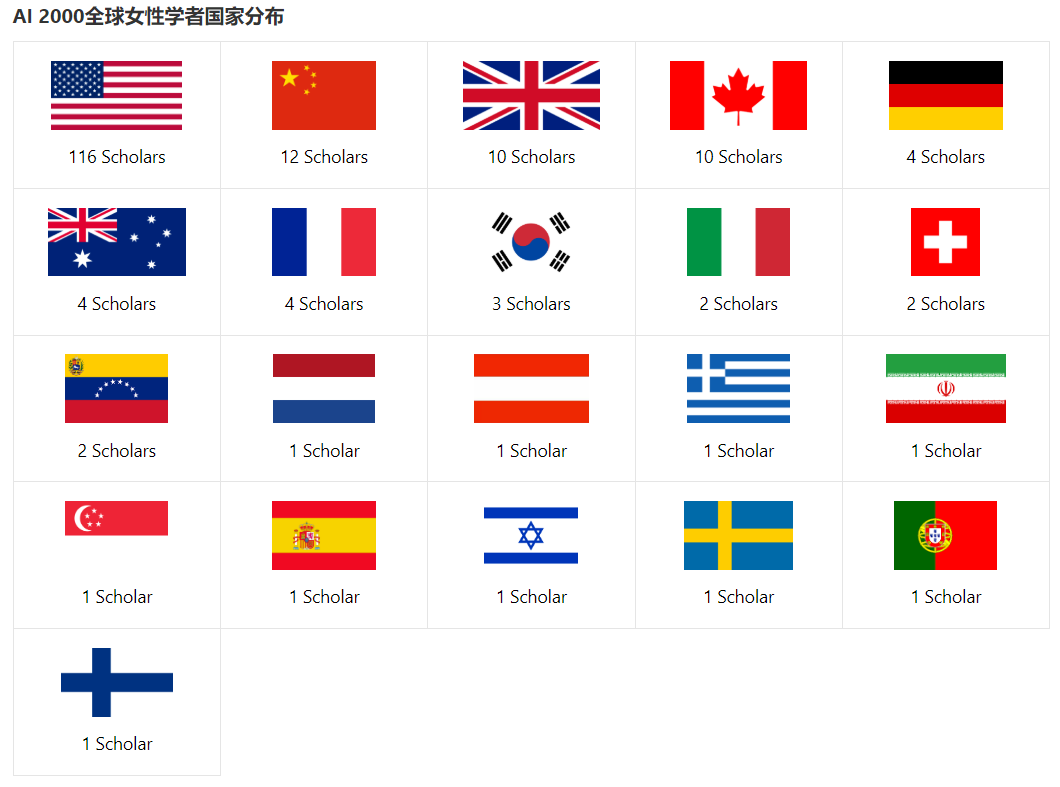
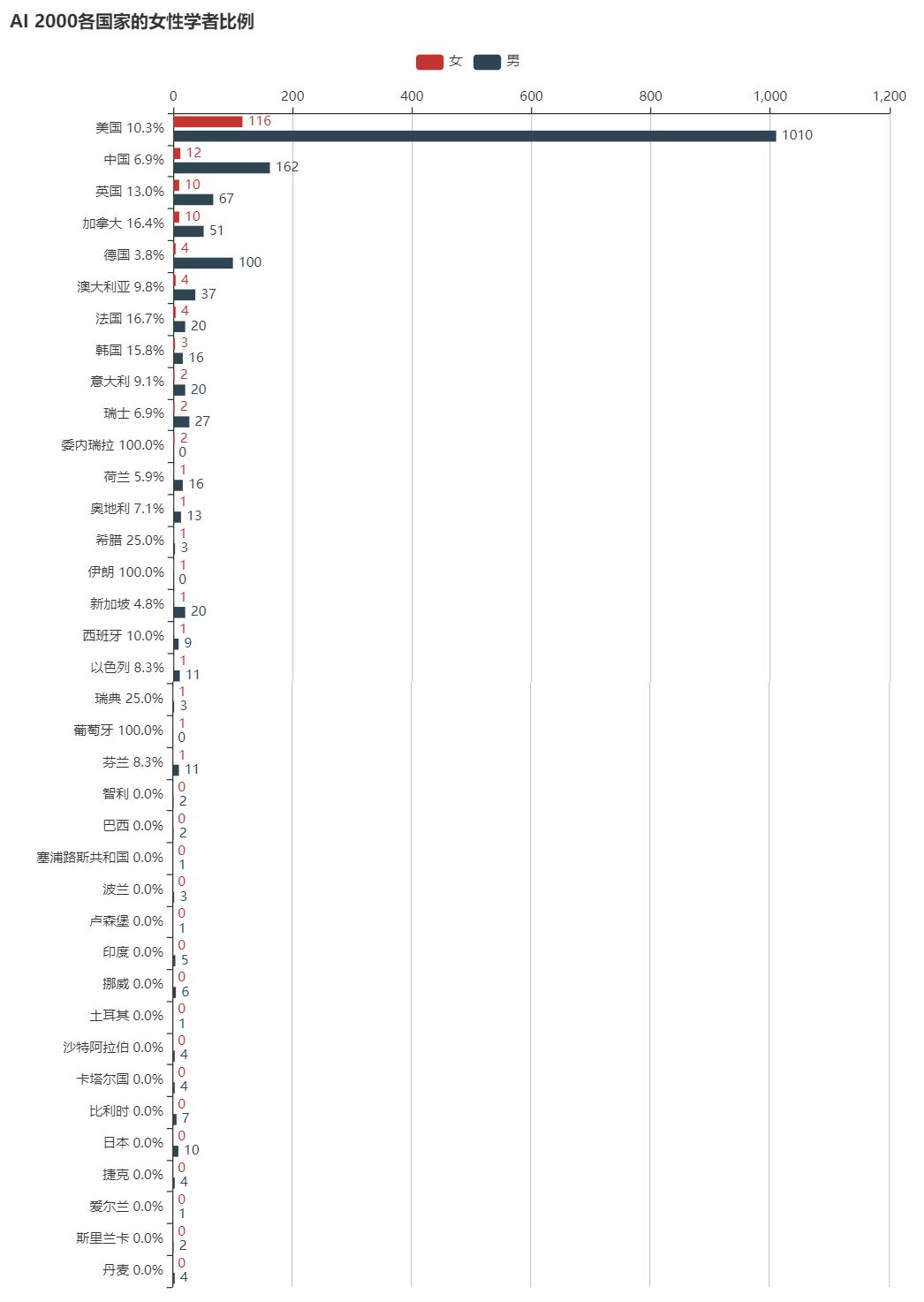
In the list of AI 2000, American female scientists accounted for 10% of the total number of American scientists. In addition, the United Kingdom, Canada and France accounted for more than 15% of the total. On the contrary, the proportion of female scientists in China is about 7%, which proves that China can improve its training of female scientists. Of course, this is only a matter of time.
China has also seen many outstanding scientists in the field of artificial intelligence, such as the above-mentioned Li Feifei, she is a chair professor at Sequoia University, a member of the National Academy of Engineering, and a “people-oriented” human Dean of Intelligent Research Institute (HAI). Born in 1976, she was just 30 years old when she published a computer vision-grade dissertation.
Shen Shengmei, an expert in deep learning. She is the chief scientist of Pence Technology, the dean of the Singapore Research Institute, and the former vice president of the Singapore Research Institute of Panasonic. The IJB-A face recognition competition under non-restricted conditions hosted by the National Institute of Standards and Technology (NIST) has won both the face verification and face recognition championships.
In addition to these leaders in computer science, Chinese female scientists are also contributing unparalleled research results in other major fields. In 1972, in her 40s, Tu Yan obtained a colorless crystal with a molecular formula of C15H22O5 and an active ingredient with a melting point of 156 ° C to 157 ° C. This is what made her the Nobel Prize in Physiology and Medicine. Artemisinin can effectively reduce the mortality of malaria patients. The birth of this drug even caused the International Astronomical Union Asteroid Center to name an asteroid Tu Tuxing.
Distribution of Academic Institutions
Specifically, there are 10 women in Google and Microsoft.Scholars are shortlisted, and MIT is 9th behind. Other top 10 academic institutions include the University of Washington, Facebook, Stanford University, UC Berkeley, Carnegie Mellon University, Tsinghua University, and Intel Corporation.

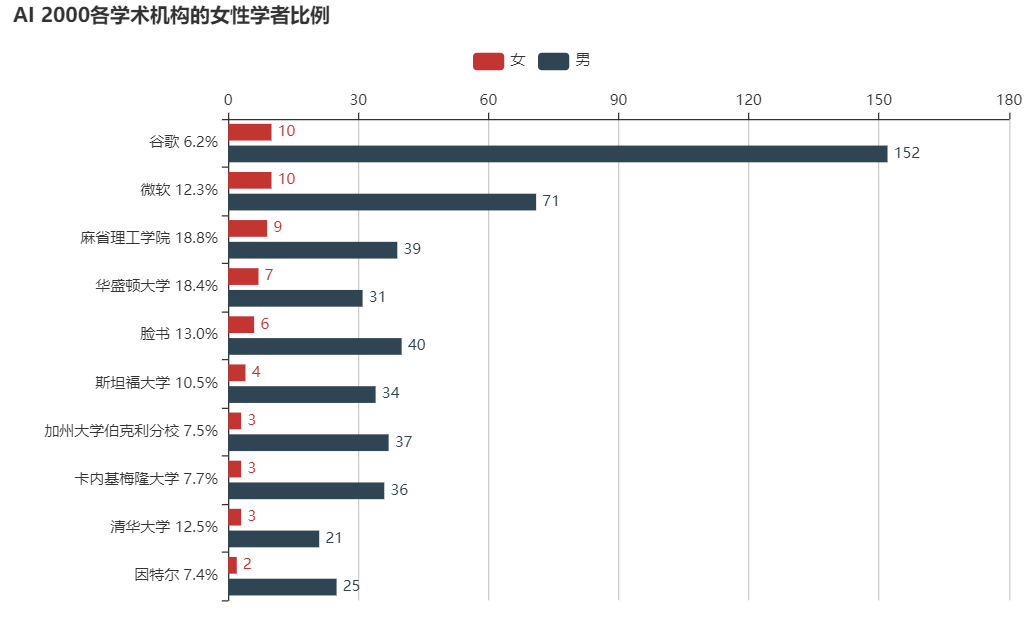
In terms of the proportion of female scholars, although Google and Microsoft both have 10 female scholars shortlisted, Google ’s top female scholars account for only 6.2%, which is lower than the international average of 9.8%, and far lower than Microsoft ’s 12.3%. .
Meanwhile, the proportion of women among MIT and Washington finalists is nearly double the international benchmark, reaching more than 18%. The percentage of women among Tsinghua’s top academics was 12.5%, higher than Stanford’s 10.5%, and 7% at UC Berkeley and Carnegie Mellon University.
Distribution
AI 2000 The most influential mechanics include 20 fields, with 100 scholars in each field. The distribution of male and female scholars in each field is shown below.
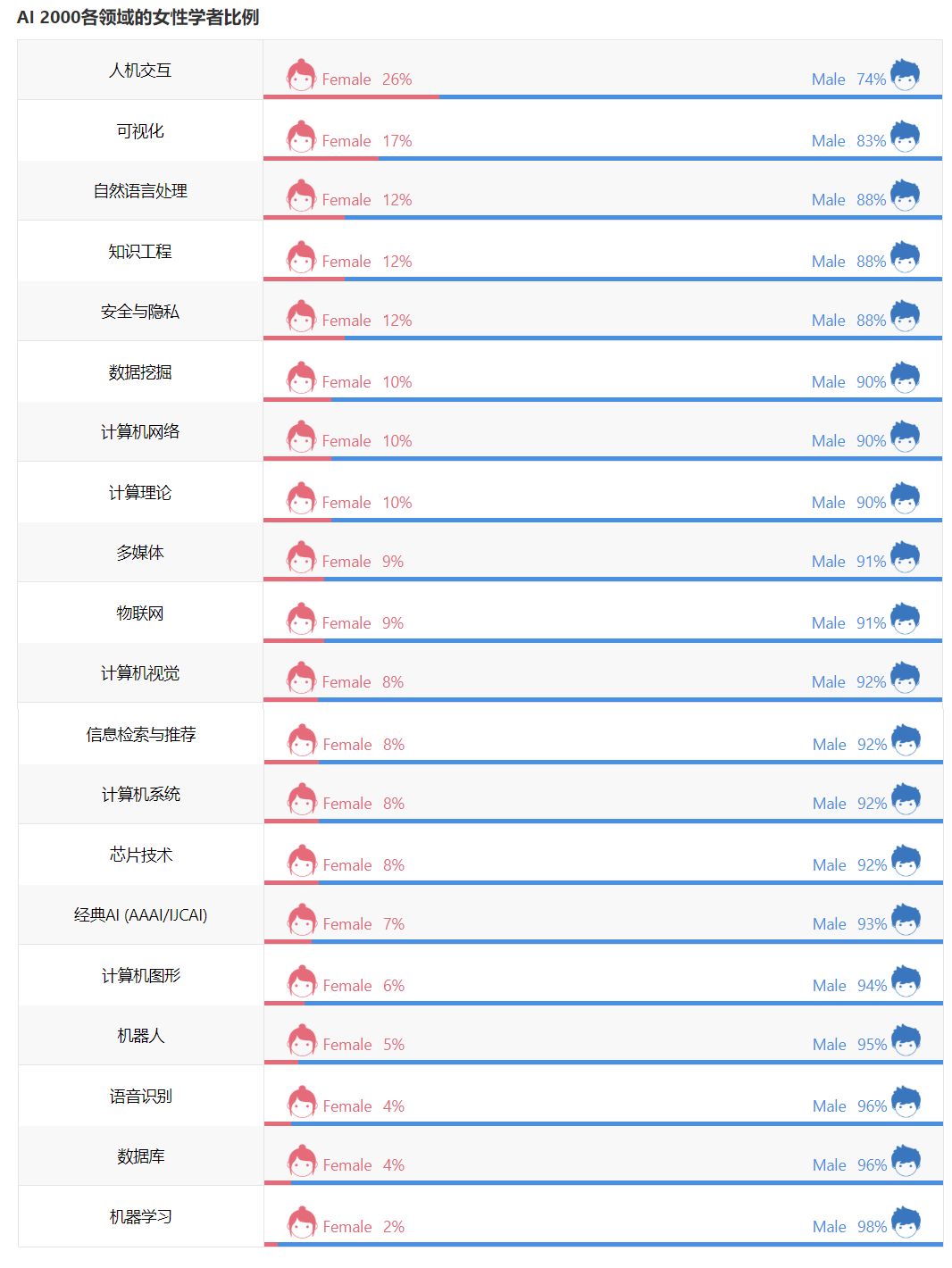
The two fields with the most female scholars are human-computer interaction and visualization, with the proportions reaching 26% and 17% respectively; the third is shared by natural language processing, knowledge engineering, and security and privacy, all reaching 12%; The four fields include data mining, computer network and computing theory, with a proportion of 10%, which is slightly higher than the international average. Other fields are lower than the international benchmark. Among them, the proportion of female scholars among the top scholars in machine learning is the least, only 2%, followed byFor database and speech recognition, both are 4%.
Research output trends
AI 2000 The world ’s most influential mechanics of artificial intelligence includes 179 female scholars and 1654 male scholars. Statistics on the proportion of scholars of different genders in all ages can be used to analyze female scholars, academic achievements and age. The correlation is shown in the figure below (the x-axis represents the age of the scholar).
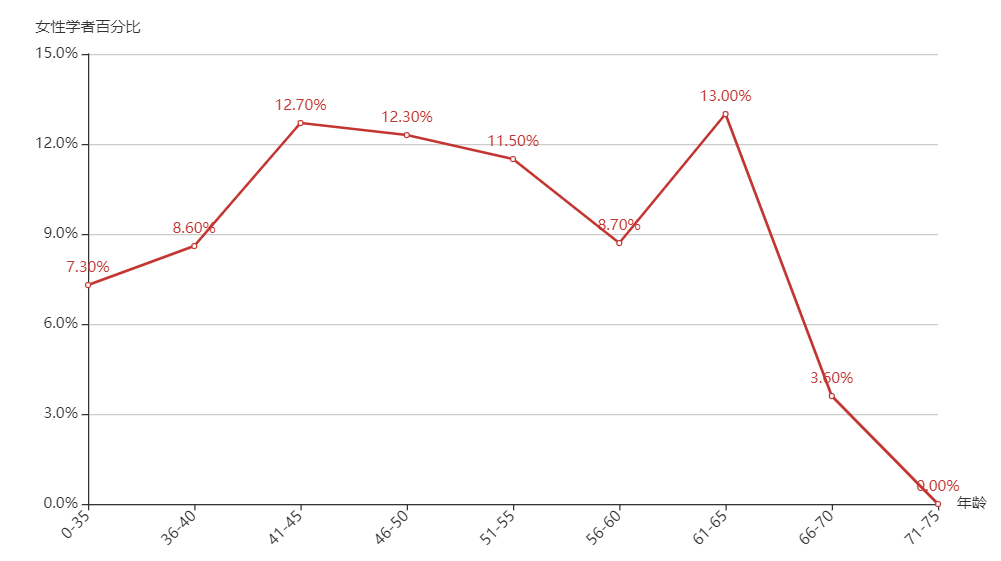
Overall, the percentage of female scholars is 9.7%, the percentage of female scholars aged 0-40 is lower than the overall level, and the percentage of female scholars aged 41-50 is higher than the overall level (56-60 except). For scholars over 65 years old, the proportion of male scholars is significantly higher than their average proportion, that is, female scholars are far below their average of 9.7%.
In addition, through statistical analysis of the age of scholars at the time of publication of each paper, we can further understand the academic output efficiency of top scholars in different age groups. Through the visual display of the figure below (the x-axis represents the age of the author at the time of publication), it can be clearly found that the academic output efficiency of male and female scholars will gradually increase with age, and both peak at the age of 46-50 years.
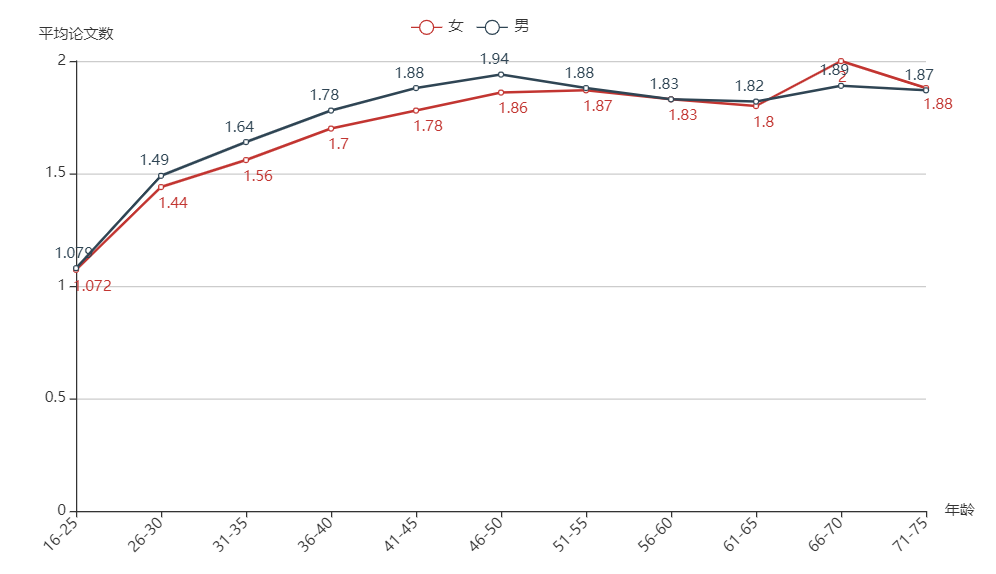
In the age group of 16-25, that is, the beginning stage of academic career, the output efficiency of female scholars and male scholars is basically the same, but between 26-50 years old, the average number of papers published by male scholars has always been higher than that of female scholars . After 50 years of age, the academic efficiency of male and female scholars has returned to the same level, and both have remained stable and sustained at the peak level.
Research Interests
Keyword extraction of AI 2000 scholars’ papers has obtained the research interests of 179 female scholars and 1654 male scholars.